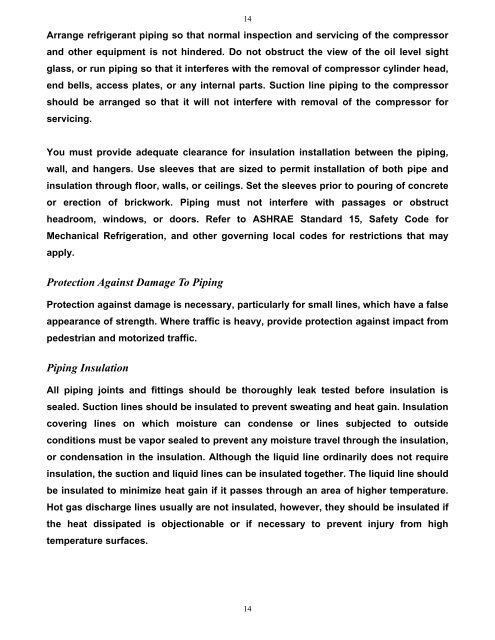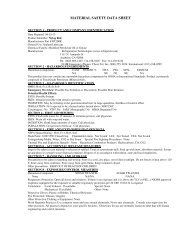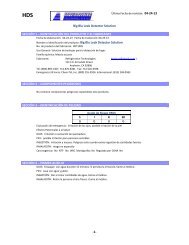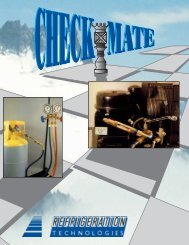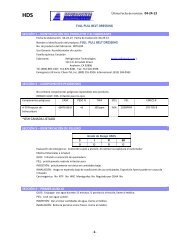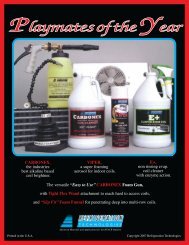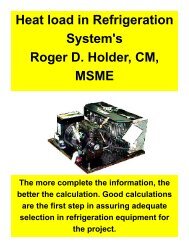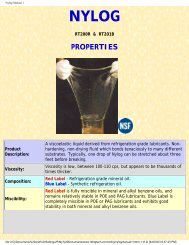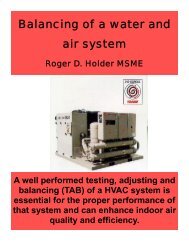Refrigeration Piping Charging Residential AirConditioning R
Refrigeration Piping Charging Residential AirConditioning R
Refrigeration Piping Charging Residential AirConditioning R
You also want an ePaper? Increase the reach of your titles
YUMPU automatically turns print PDFs into web optimized ePapers that Google loves.
14<br />
Arrange refrigerant piping so that normal inspection and servicing of the compressor<br />
and other equipment is not hindered. Do not obstruct the view of the oil level sight<br />
glass, or run piping so that it interferes with the removal of compressor cylinder head,<br />
end bells, access plates, or any internal parts. Suction line piping to the compressor<br />
should be arranged so that it will not interfere with removal of the compressor for<br />
servicing.<br />
You must provide adequate clearance for insulation installation between the piping,<br />
wall, and hangers. Use sleeves that are sized to permit installation of both pipe and<br />
insulation through floor, walls, or ceilings. Set the sleeves prior to pouring of concrete<br />
or erection of brickwork. <strong>Piping</strong> must not interfere with passages or obstruct<br />
headroom, windows, or doors. Refer to ASHRAE Standard 15, Safety Code for<br />
Mechanical <strong>Refrigeration</strong>, and other governing local codes for restrictions that may<br />
apply.<br />
Protection Against Damage To <strong>Piping</strong><br />
Protection against damage is necessary, particularly for small lines, which have a false<br />
appearance of strength. Where traffic is heavy, provide protection against impact from<br />
pedestrian and motorized traffic.<br />
<strong>Piping</strong> Insulation<br />
All piping joints and fittings should be thoroughly leak tested before insulation is<br />
sealed. Suction lines should be insulated to prevent sweating and heat gain. Insulation<br />
covering lines on which moisture can condense or lines subjected to outside<br />
conditions must be vapor sealed to prevent any moisture travel through the insulation,<br />
or condensation in the insulation. Although the liquid line ordinarily does not require<br />
insulation, the suction and liquid lines can be insulated together. The liquid line should<br />
be insulated to minimize heat gain if it passes through an area of higher temperature.<br />
Hot gas discharge lines usually are not insulated, however, they should be insulated if<br />
the heat dissipated is objectionable or if necessary to prevent injury from high<br />
temperature surfaces.<br />
14


